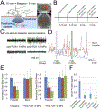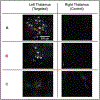High-Intensity Focused Ultrasound: A Review of Mechanisms and Clinical Applications
- PMID: 34374945
- PMCID: PMC8608284
- DOI: 10.1007/s10439-021-02833-9
High-Intensity Focused Ultrasound: A Review of Mechanisms and Clinical Applications
Abstract
High Intensity Focused Ultrasound (HIFU) is an emerging and increasingly useful modality in the treatment of cancer and other diseases. Although traditional use of ultrasound at lower frequencies has primarily been for diagnostic imaging purposes, the development of HIFU has allowed this particular modality to expand into therapeutic use. This non-invasive and acoustic method involves the use of a piezoelectric transducer to deliver high-energy pulses in a spatially coordinated manner, while minimizing damage to tissue outside the target area. This review describes the history of the development of diagnostic and therapeutic ultrasound and explores the biomedical applications utilizing HIFU technology including thermally ablative treatment, therapeutic delivery mechanisms, and neuromodulatory phenomena. The application of HIFU across various tumor types in multiple organ systems is explored in depth, with particular attention to successful models of HIFU in the treatment of various medical conditions. Basic mechanisms, preclinical models, previous clinical use, and ongoing clinical trials are comparatively discussed. Recent advances in HIFU across multiple medical fields reveal the growing importance of this biomedical technology for the care of patients and for the development of possible pathways for the future use of HIFU as a commonplace treatment modality.
Keywords: Ablation; Drug delivery; Focused ultrasound; Neuromodulation; Sonoporation.
© 2021. Biomedical Engineering Society.
Figures





References
-
- Bing C, Patel P, Staruch RM, Shaikh S, Nofiele J, Wodzak Staruch M, Szczepanski D, Williams NS, Laetsch T, and Chopra R. Longer heating duration increases localized doxorubicin deposition and therapeutic index in Vx2 tumors using MR-HIFU mild hyperthermia and thermosensitive liposomal doxorubicin. International Journal of Hyperthermia 36:196–203, 2019. - PMC - PubMed
-
- Bowary P, and Greenberg BD. Noninvasive Focused Ultrasound for Neuromodulation: A Review. , 2018. - PubMed
Publication types
MeSH terms
Grants and funding
LinkOut - more resources
Full Text Sources

